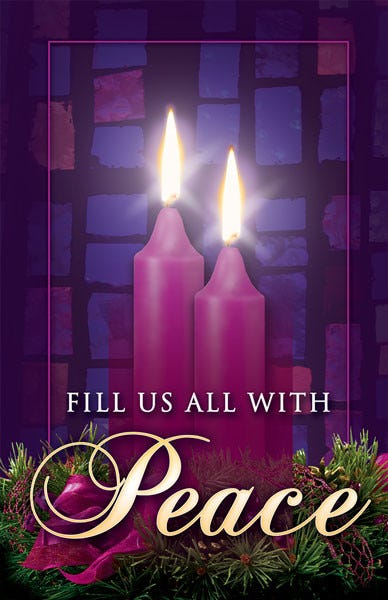During the First Week of Advent, Christians reflected on the meaning of hope, one of the three theological virtues. We are not only hoping for Christ to come in Bethlehem, but we are hoping for Christ to come again and into our hearts. With taking those three comings of Christ into account, it has a prophetic message to the season. The prophets from the ones who hear about in the Old Testament to John the Baptist preached the message of peace to the Israelites. The Israelites, who struggled, were seeking a sign from the prophets sent by God.
During the Second Week of Advent, the major prophet that Christians look toward to is John the Baptist. Despite the fact the word “cousin” was not part of Hebrew terminology, John the Baptist was in fact Jesus’s cousin. Given the fact John the Baptist was by no means the Savior, he foretold of the coming of the Savior by preaching the message of repentance. John the Baptist, part of the desert-dwelling Jewish Essene sect, would often make the cries of, “Repent, for the Kingdom of Heaven is at hand” (Matthew 3:1). The cries of John the Baptist were indirectly foretold in Isaiah 40: 3-5, when it was written, “Prepare the way of the Lord. Make straight his paths.” Despite the fact the Essenes were not mentioned in scripture, proof of their existence as a Jewish sect came about with the discovery of the Dead Sea scrolls. The Essence were claimed to have written and stored the Dead Sea scrolls. The nutrition was based in a Spartan diet, and the method of baptism, especially with John the Baptist, used was the Qumran ablution rite. This was how baptism was done in the days of the early Church. Today, it is different. Water is poured over the head of the one that is to be baptized with/without heading into a pool.
A French Cardinal by the name of Jean Daniélou considered Saint John the Baptist to be the “patron saint of Advent.” Given the fact he has two days in the liturgical calendar that are commemorated on June 24 (the Nativity of Saint John the Baptist) and August 29 (the Passion of Saint John the Baptist), he is pivotal for the Advent and Christmas seasons. In the first two chapter of Luke’s Gospel, it contains both nativities of John the Baptist and Jesus. Luke’s first chapter contains both the Benedictus and the Magnificat canticles. Luke is known as the Marian Gospel, given the fact Mary is showcased from the time God asked her to be the mother of our Savior to the crucifixion and death of Jesus.
While there were major and minor prophets in the Old Testament, there was a greater prophet that came long after their existence. The prophets only learned from what God told them about how the Savior would come about. John the Baptist came to physically show the way to the Savior without having to write it down for scriptural purposes. The prophet Malachi in chapter 3, verse 1 indirectly wrote of the forerunner to the Savior, “My messenger, who will prepare the way before me. Then, suddenly, the Lord you are seeking will come to his temple.”
After the people were baptized by John the Baptist, they were told to “Produce good fruit as evidence of your repentance” (Matthew 3:8). John the Baptist also said, “I am baptizing you with water, for repentance, but the one who is coming after me is mightier than I. I am not worthy to carry his sandals. He will baptize you with the Holy Spirit and fire” (Matthew 3:11). John the Baptist would only pour water over the heads of whom he baptized. However, Jesus would be the one that would send the Holy Spirit upon us to seal the gifts given to us at our baptism.




